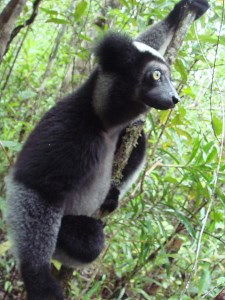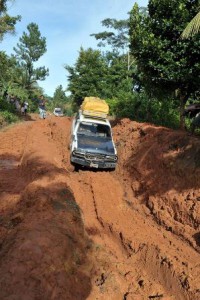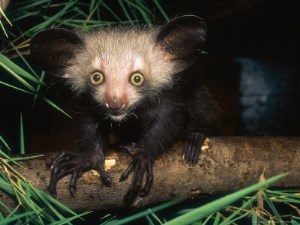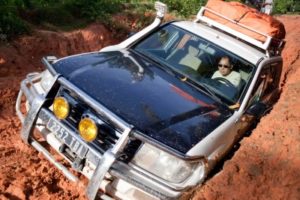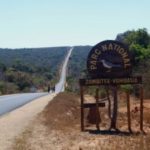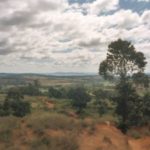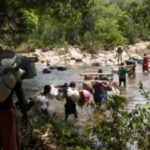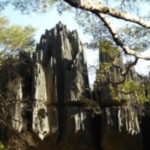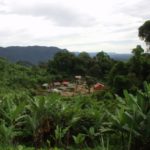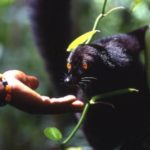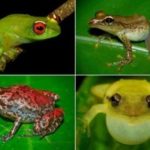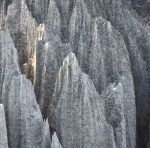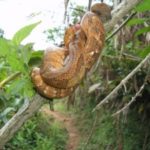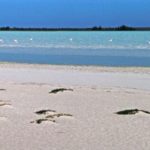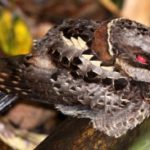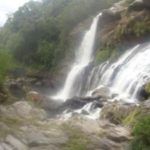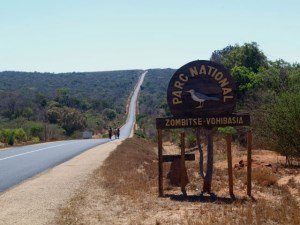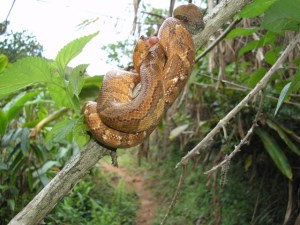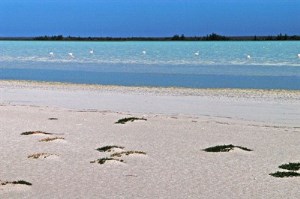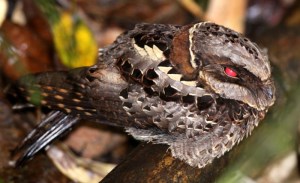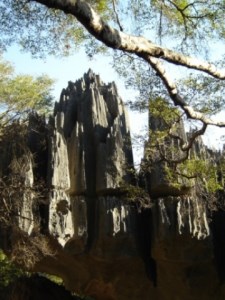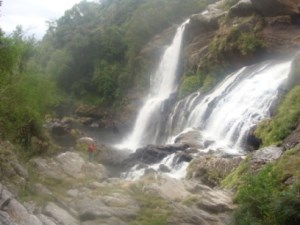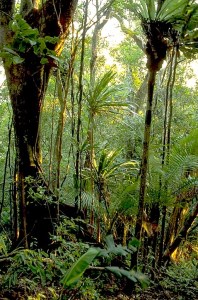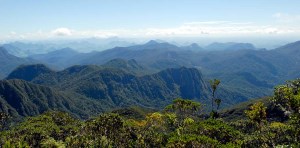Experience Madagascar's lush east coast:
Mananara North National Park
The Mananara North National Park is 250 km north of Tamatave(Taomasina) and belongs to a protected area of more than 140,000 hectares in size. The protected area also includes an approximately 1,000-hectare Marine Park from several small islands and colorful populated coral reefs. It is located a little south of the bay of Antagonil near the Masoala Peninsula. The national park covers 23,000 hectares and has existed in its current form since 1989. Since the number of visitors to the terrestrial part of the national park is still quite small, here is a unspoiled landscape with deep valleys, bizarre rock formations and idyllic waterfalls. The vegetation corresponds to a tropical humid forest with mangroves near the coasts as well as extensive beaches. The Betsimisaraka and the Tsimihety are the most important ethnic groups in the region. Both peoples practice agriculture and grow rice as well as Coffee, Vanilla and Cloves an. The park is known as UNESCO Biosphere Reserve and is thus considered an exemplary region in which concepts of sustainable coexistence between people and nature are developed and lived.
Mananara North National Park: A rich flora and fauna
The Mananara North Protected Area offers shelter to a remarkable diversity of fauna and flora. The humid forests are home to a particularly large number of small mammals: 17 Rodents- and 13 lemur species live in this national park on the east coast. Aye-aye lemurs, eastern woolly lemurs, brown mouse lemurs and even the largest of all lemurs, the indri-indris, are native here. The indris of the north are especially special. In contrast to their congeners from the south, their fur is almost black and thus much darker than that of the southern Indri-Indri populations. Also 77 bird species like the Red-tailed Vanga, the Helmeted Vanga and the Madagascar Kestrel live in Mananara. 21 Reptiles- and Amphibian species are also native to the protected area. Particularly impressive, however, is the lush plant life: naturalists here have already identified more than 1200 different plant species recorded. Palm trees (47 species) and magnificent tropical flowers, including some locally endemic orchids grow in these magnificent forests. The marine reserve includes coral reefs with 132 different coral species. Some are unfortunately in a pretty bad condition. Divers can find over 180 species of fish and more than 100 mollusks and echinoderms. Between July and September, when the Humpback whales come to calve in these balmy waters, many coastal resorts offer tours where you can Humpback whales in Madagascar can observe. If you are lucky, you may see a dugong, a fork-tailed manatee.
A selection of the most beautiful tours of Mananara North
The established trails are longer than in other national parks and take up most of the day. If you go in search of lemurs, reptiles and birds in the Mananara Rainforest, you are Raincoats, Trekking suitable clothing and above all Sturdy shoes a necessity. With the Verezanantsoro and the Ivontaka Tour deny 15 to 20 km long hiking trails through the tropical rainforest, where some vanilla and clove plantations are on the way. A slightly more difficult tour is the Varary Tour. It lasts two days and takes you into the heart of the dense rainforest, from where you can regularly enjoy spectacular views over the national park. A boat trip to the small island of Nosy Antafana, which is home to a huge colony of bats and seabirds, is also highly recommended. Enjoy the tropical dream beaches and of course snorkeling in the coral reefs. There is basic accommodation on the island and camping is allowed.
Your visit to Mananara North National Park. Arrival and best time to travel
The climate in this region is humid with frequent rainfall and warm temperatures throughout the year. However, you should avoid the northeastern areas of the island during the cyclone season from January to March. The park is accessible year-round by car or boat. However, motorists should be prepared for a poorly surfaced, muddy sandy road between Soanierana Ivongo and Mananara North, which can only be reached with a powerful all-terrain vehicle is passable. At the turnoff in a village called Antanambe you drive another 8 km on a bad dirt road to the park entrance. We will be happy to advise you about your options for a cheap Rental car to take advantage of. A visit to Mananara North National Park can also be easily integrated into a Individual trip to Masoala Peninsula schedule. We will be happy to assist you with your individual travel planning. Another possibility to reach Mananara North is by boat from Mananara (2 to 4 hours, depending on the boat) or from Antanambe (1 hour). Transfers are possible every day.
In some villages such as Antanambao-Mandrisy and Sahasoa, some eco-lodges are currently being built by the communities. The communities work closely with the park management and try to create a sustainable tourism to establish in the region, as well as to promote the development of community projects. Within the park you can also camp. There are several campsites with very basic facilities.

